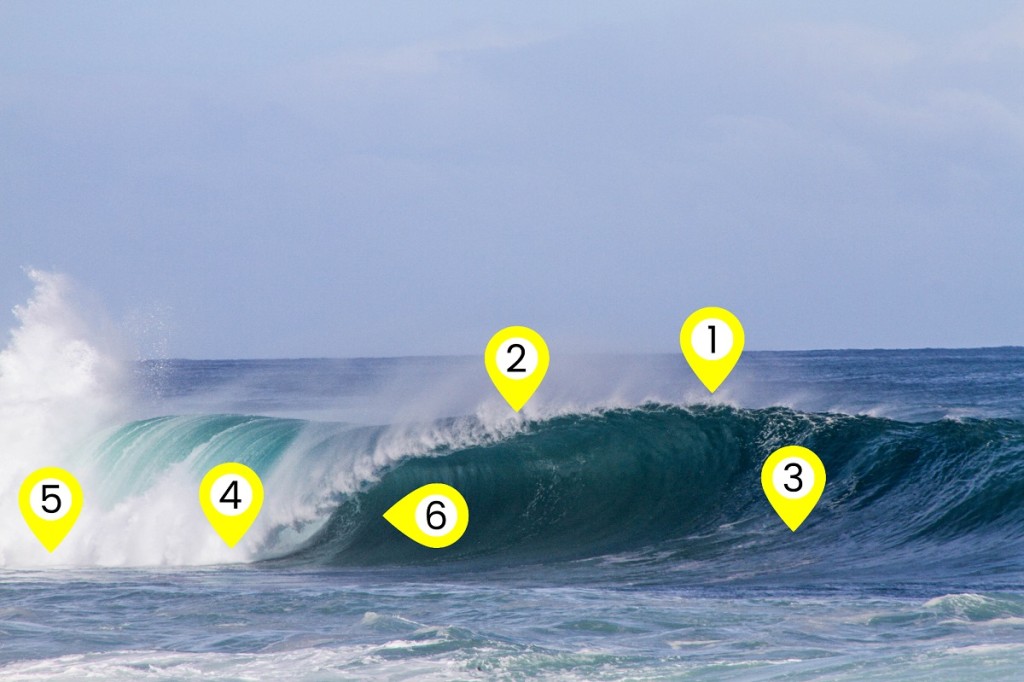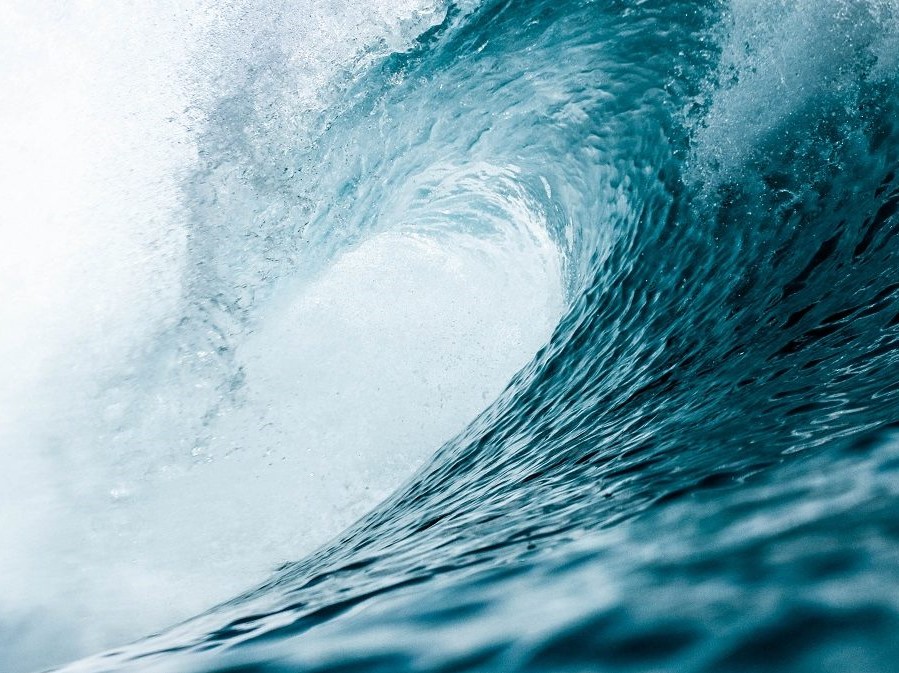Learning how to read a wave is one of the things that every improving surfer wants to master.
It’s so easy when you’re out there with your surf instructor, and he starts yelling “paddle! paddle!” – You never have to even think about which wave to go for. But, once you begin to improve and you’re sitting out in the line-up by yourself surrounded by more experienced surfers, it’s so easy to begin second-guessing yourself. Leaving you 20 waves in without a single ride.
How to Read a Wave: The Anatomy of a Wave

The first thing you’ll need to do when learning how to read a wave is to understand the basic anatomy of a wave – where it starts, where it breaks, and what part you’re supposed to surf!
- The peak is the highest point of a wave. This is the very first part of the wave that breaks. Discovering the peak is essential to reading and predicting how a wave will break.
- The lip is the uppermost part of a breaking wave, it is the edge of the wave opening.
- The face is the part of the wave where you should be surfing, it is the area that has not broken yet. Surfers will ride the face of the wave away from the area that is breaking, towards the unbroken section of the wave.
- The impact zone is where you see the wave crash onto the flat water. If you want to avoid wiping out, stay clear of the impact zone.
- The white water is where you will begin to learn to surf. This is the part of the wave that has already broken, which looks like a line of white foam. It is perfect for getting to grips with your pop-ups and learning to balance on your board as there is no steep incline and it’s a lot slower than taking off on the face of the wave.
- You’re probably not quite there yet, but the tube of a wave is the hollow part of a breaking wave, often referred to as a barrel. It is an open cylinder between the face of the wave and the lip as it curls over – this is an experienced surfer’s dream place to be.
How to Read a Wave: At the Line-up
When you’re sitting on your board at the line-up, look towards the horizon. You’ll soon see a wave start to form and once it does, identify the peak (remember: this is the highest point of the wave).
The wave will begin breaking from the peak.
The side of the peak which has the steepest angle is the side the wave will break – this is the direction you will surf. So if the peak begins to break from the left (looking at the wave) make a mental note that you’ll need to make a swift left turn once you pop up. Vice versa, if the peak begins breaking from the right (looking towards the wave), you’ll need to make a right hand turn to surf the wave right.
If there is no clear angle on either side of the peak, it will more than likely closeout. A closeout is where a wave breaks all at once, and you can’t surf left or right – the best thing to do here is paddle out past the peak it and wait for the next set of waves to come in.
So, you’ve assessed your wave, you’ve identified the peak, and can see which way it’s going to break – how do you catch it?
- Paddle as fast as you can towards the peak. Ideally, you want to get there before it begins to break.
- Once you’ve made it to the peak (or as close as you can get before it breaks) turn yourself around and begin paddling towards the beach.
- Once you feel the board begin to speed up and angle down, pop up on your board and shift your body for a left or right turn.
- Shift your weight onto your front foot to pick up some speed and ride that wave all the way to the end of the line.
- Enjoy the ride!
Enjoyed reading about how to read a wave? Check out How to Duck Dive next.
Disclaimer: This article contains affiliate links. We may receive a small commission if you make a purchase through one of these links. Please read our Affiliate Disclosure for more information.

